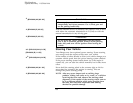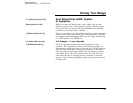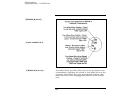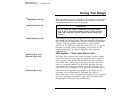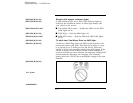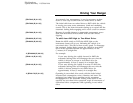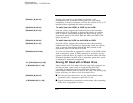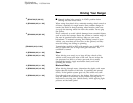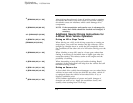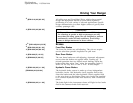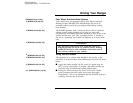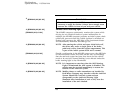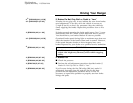
174
[DR18201(R )06/94]
During axle break-in or operation in extremely cold
temperatures, the automatic locking hubs may not release
completely. It may be necessary to drive the vehicle for 10 to 15
minutes before repeating the release procedure.
[DR18240(R )08/94]
To shift from 4x4 HIGH or 2WD to 4x4 LOW:
[DR18295(R )01/95]
Stop the vehicle, depress the brake and place the automatic
transmission in N (Neutral) or depress the clutch on vehicles
with a manual transmission. Rotate the 4WD switch on the
instrument panel to 4x4 LOW. Both the 4WD and 4WD LOW
lights are now lit.
[DR18350(R )08/94]
To shift from 4x4 LOW to 4x4 HIGH or 2WD:
[DR18380(R )01/95]
Stop the vehicle, depress the brake and place the automatic
transmission into N (Neutral) or depress the clutch on vehicles
with a manual transmission. Rotate the 4WD switch on the
instrument panel to 4x4 HIGH or 2WD.
[DR18500(ALL)03/95]
It is not recommended to operate the vehicle in the 4WD modes
with a temporary spare. If 4WD operation is necessary, do not
operate at speeds above 10 mph or for distances above 50 miles.
Extended operation in 4WD with a temporary spare may result
in damage to drivetrain components.
%
*
[DR19200(ALL)01/89] Driving Off Road with 4-Wheel Drive
*
[DR19300(ALL)11/89]
Most vehicles with four-wheel drive are especially equipped for
driving on sand, snow, mud, or rough terrain and have
operating characteristics that are somewhat different from
conventional vehicles, both off and on the road. The driving tips
below will help you learn to use four-wheel drive.
[DR19500(R )08/94]
■ Do not use four-wheel drive on dry, hard-surfaced roads,
especially with a temporary spare tire in use.
*
[DR19600(ALL)11/89]
■ Special maintenance procedures are necessary after operating
with drive components in water.
File:10undrr.ex
Update:Wed May 1 13:52:06 1996



